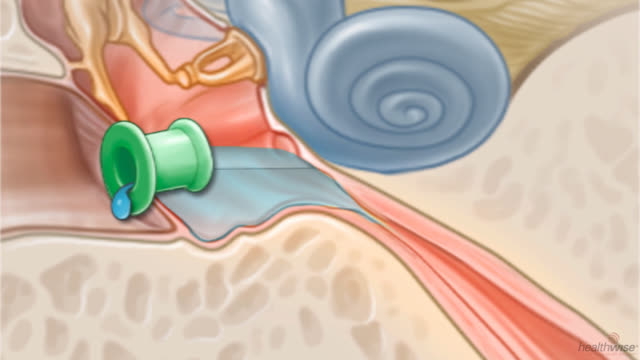Tympanometry in Ear Infections (Otitis Media)
Exam Overview
Tympanometry tests the movement of the eardrum when an ear infection or other middle ear problem is suspected. A doctor places the tip of a handheld tool into the child’s ear. The tool changes the air pressure inside the ear and produces a clear tone. Then the tool measures how the eardrum responds to the pressure and the sound. The results of this test are used to help figure out what is going on in the ear.
Why It Is Done
The results of tympanometry can tell doctors whether there is fluid behind the eardrum or whether an ear tube is blocked. The test can also discover whether there is a hole in the eardrum. This information helps doctors decide what kind of treatment your child may need.
Results
Normally the eardrum moves easily when pressure in the ear canal is changed. Most of the time, if the test is normal, there is no fluid behind the eardrum.
When the eustachian tube, which connects the back of the nose and throat with the middle ear, is not working well, the eardrum does not move as it should. But in some cases the test shows fluid behind the eardrum when there really is none.
What To Think About
If the child is crying or unable to hold still, tympanometry may be difficult or impossible to do. Crying and movement can cause incorrect results. Earwax can also cause false results. If there is a lot of earwax, it may be cleared out before the test begins. This test may not be useful for babies younger than 7 months because the results can be misleading.
Before the test, let your child know what is going to happen. This will help keep your child calm and still during the test. At home before the test, you can play “pretend ear exam” so your child can practice sitting still. Also, explain that loud noises are part of the test.
Credits
Current as of: October 21, 2018
Author: Healthwise Staff
Medical Review:Susan C. Kim, MD – Pediatrics & Kathleen Romito, MD – Family Medicine & John Pope, MD, MPH – Pediatrics
Current as of: October 21, 2018
Author: Healthwise Staff
Medical Review:Susan C. Kim, MD – Pediatrics & Kathleen Romito, MD – Family Medicine & John Pope, MD, MPH – Pediatrics
This information does not replace the advice of a doctor. Healthwise, Incorporated, disclaims any warranty or liability for your use of this information. Your use of this information means that you agree to the Terms of Use. Learn how we develop our content.



